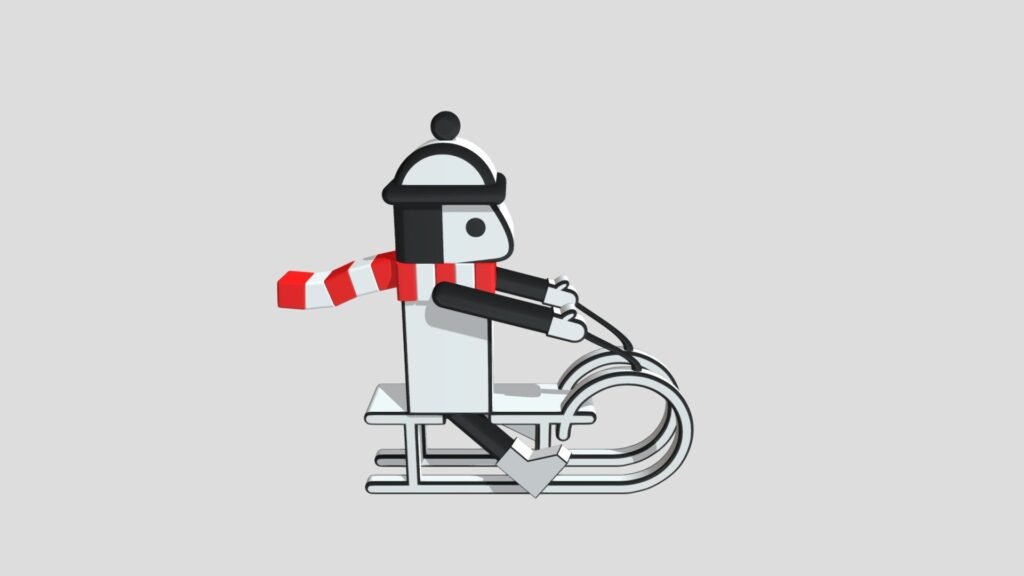If you grew up in the mid-2000s spending hours on your computer instead of finishing homework, there’s a good chance you stumbled onto a little online game called Line Rider. At first glance, it looked incredibly simple: a blank white canvas, a pencil tool, and a tiny figure on a sled named Bosh. The goal? Draw a line, hit play, and watch him ride along. No flashy graphics, no background music, no objectives. And yet, somehow, Line Rider became one of the most addictive, creative, and legendary internet games ever made.
Even today, nearly twenty years later, people are still making Line Rider tracks—some casual, some breathtakingly complex, and some that sync perfectly with music like Beethoven’s Symphony No. 5 or dubstep drops. What was once a time-killer during boring classes has turned into a full-blown creative platform.
In this article, I’ll take you through the story of Line Rider, why it’s still alive today, the communities that keep pushing it forward, and how you can start playing (or replaying) it yourself.
What Is Line Rider?
At its core, Line Rider is a physics-based sandbox game. You draw lines with your mouse, press play, and the rider sleds down whatever track you created. The magic is in the physics engine: Bosh follows gravity, momentum, and friction just enough to make it feel real, but with just enough looseness that wild stunts and impossible tricks can happen.
There are three types of lines you can draw:
- Normal lines – the sled rides on these.
- Scenery lines – purely decorative, no collision.
- Acceleration lines – these give the sled a speed boost.
That’s it. Three tools, infinite creativity.
A Short History of Line Rider
Line Rider was created in 2006 by Boštjan Čadež, a Slovenian student. He originally designed it as a Flash project for a class, not expecting it to blow up. But when it hit the internet, it spread like wildfire across forums, MySpace pages, and blogs.
- 2006: The first version was released. Simple, buggy, but addictive.
- 2007: Line Rider became a viral sensation. YouTube filled up with videos of insane tracks.
- 2008–2010: Official versions and clones popped up, including Line Rider 2: Unbound for PC and DS.
- 2010s to Today: The Flash version died, but the community built updated versions that still run. Now you can play Line Rider online for free or even download it for Windows, Mac, and mobile.
What’s incredible is that a game with no levels, no scoring, and no goals managed to stay relevant for two decades—purely because of the creativity of its players.
Why Line Rider Was So Addictive
When you look back, Line Rider didn’t have what most games offer. No achievements, no leaderboards, no character customization. And yet, people like me spent hours just drawing and redrawing lines, trying to get Bosh to land a perfect jump.
Here’s why it worked:
- It was endless. There was no “level one” or “game over.” You could keep building forever.
- It felt personal. Every track was your own creation, even if it was just a scribble.
- It punished and rewarded patience. If you didn’t think about physics, your rider crashed instantly. But when you nailed that loop or jump, it was insanely satisfying.
- It sparked creativity. Some players built rollercoasters, others made art pieces, and some synced tracks to music—turning Line Rider into a medium, not just a game.
The Rise of Line Rider Videos
If you’ve never gone down the rabbit hole of Line Rider YouTube videos, you’re missing out. Around 2007, players realized they could screen-record their tracks, edit them, and upload them. Suddenly, Line Rider wasn’t just a toy—it was performance art.
Some legendary examples:
- “Jagged Peak Adventure” (2007): One of the first tracks to go viral.
- “Mountain King” (2009): A track synced to In the Hall of the Mountain King that blew everyone’s mind.
- Beethoven Symphony No. 5 Tracks: Multiple creators have perfectly synced sled movement to classical music.
- Modern EDM/Dubstep Syncs: Fans now build tracks that hit every beat drop with jaw-dropping precision.
This trend is what really kept Line Rider alive. People weren’t just playing for themselves—they were creating content that others could watch and admire.
The Line Rider Community Today
Believe it or not, Line Rider still has an active community in 2025. On Reddit, Discord, and YouTube, creators are constantly pushing the limits of what the game can do. Some spend hundreds of hours crafting tracks with perfect timing and smooth transitions.
There are even categories now:
- Scenery Tracks: Focused on visuals, with detailed backgrounds and art.
- Tech Tracks: Pure physics wizardry, with flips, loops, and tricks.
- Music Syncs: The most popular style, lining every movement to a soundtrack.
It’s like skateboarding culture—everyone uses the same “board,” but the creativity and style are infinite.

Why Line Rider Still Matters
For me, Line Rider represents something bigger than just a game. It shows how simplicity can unleash creativity. In an era where games try to hook us with microtransactions, complex storylines, and cinematic graphics, Line Rider proves that sometimes all you need is a blank canvas and a bit of imagination.
It also has educational value. Teachers have used Line Rider to explain physics concepts like acceleration, momentum, and gravity. Some even use it in classrooms to make science fun.
And honestly? It’s therapeutic. There’s something calming about slowly sketching a slope, hitting play, and watching your little sledder ride smoothly across the screen.
How to Play Line Rider in 2025
The good news is: you can still play Line Rider easily today.
- Play Online: Sites like linerider.com let you draw and ride instantly.
- Download Versions: There are modern, open-source builds for Windows, Mac, and even mobile.
- YouTube Channels: If you don’t want to build, you can just watch creators’ tracks. Some of them are more impressive than Hollywood animation.
Pro Tip for Beginners: Start small. Don’t try to make a masterpiece right away. Just draw a slope, then a jump, then maybe a loop. Once you get the hang of it, you’ll find yourself addicted again.
Final Thoughts
Line Rider isn’t just a silly little Flash game from the past—it’s proof that imagination beats complexity. With nothing more than a pencil tool and a stick figure, people have built tracks that rival rollercoasters, animations, and even music videos.
For me, revisiting Line Rider is like opening an old sketchbook. The lines are wobbly, the crashes are funny, and sometimes nothing works the way you want. But when it all clicks—the sled lands perfectly, the loop runs smoothly, the music syncs just right—it’s magic.
So whether you’re a nostalgic 2000s kid or someone discovering it for the first time, Line Rider is worth your time in 2025. It’s free, it’s simple, and it might just suck you in for hours like it did all those years ago.







